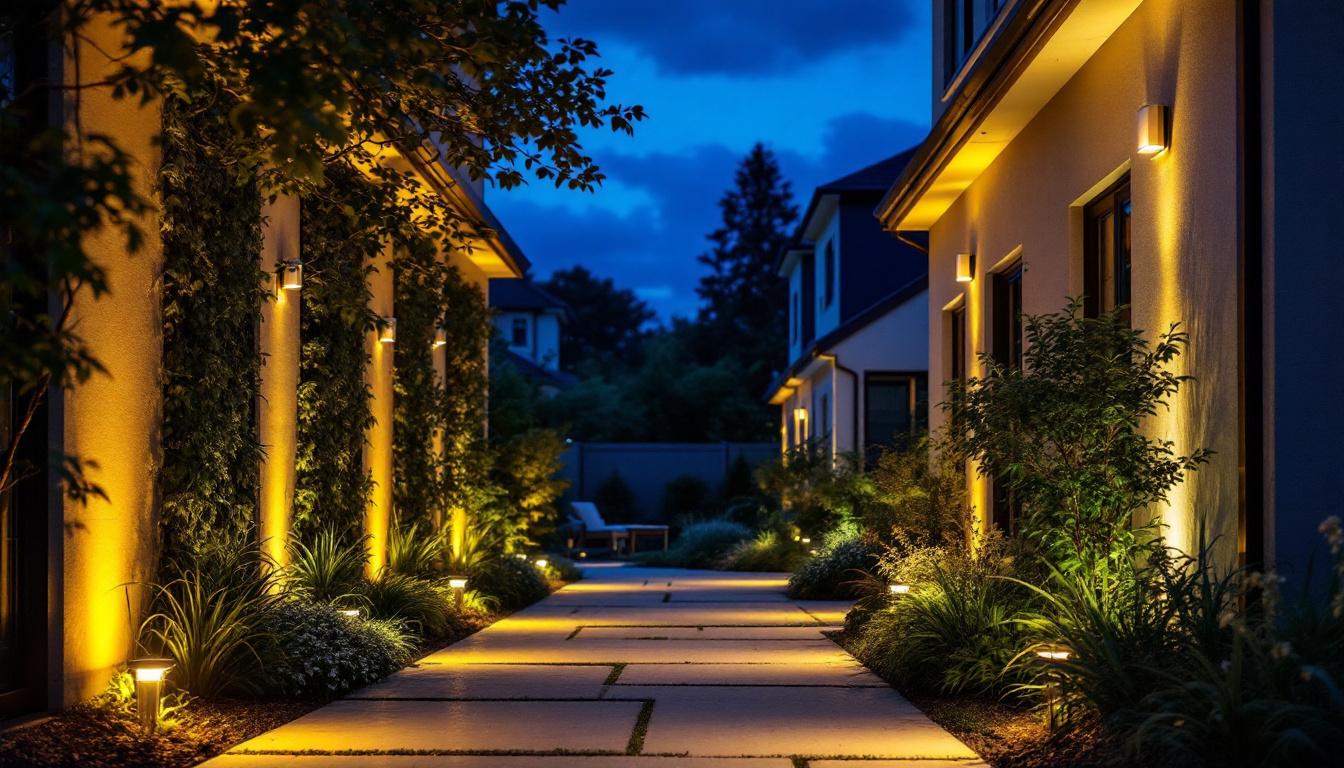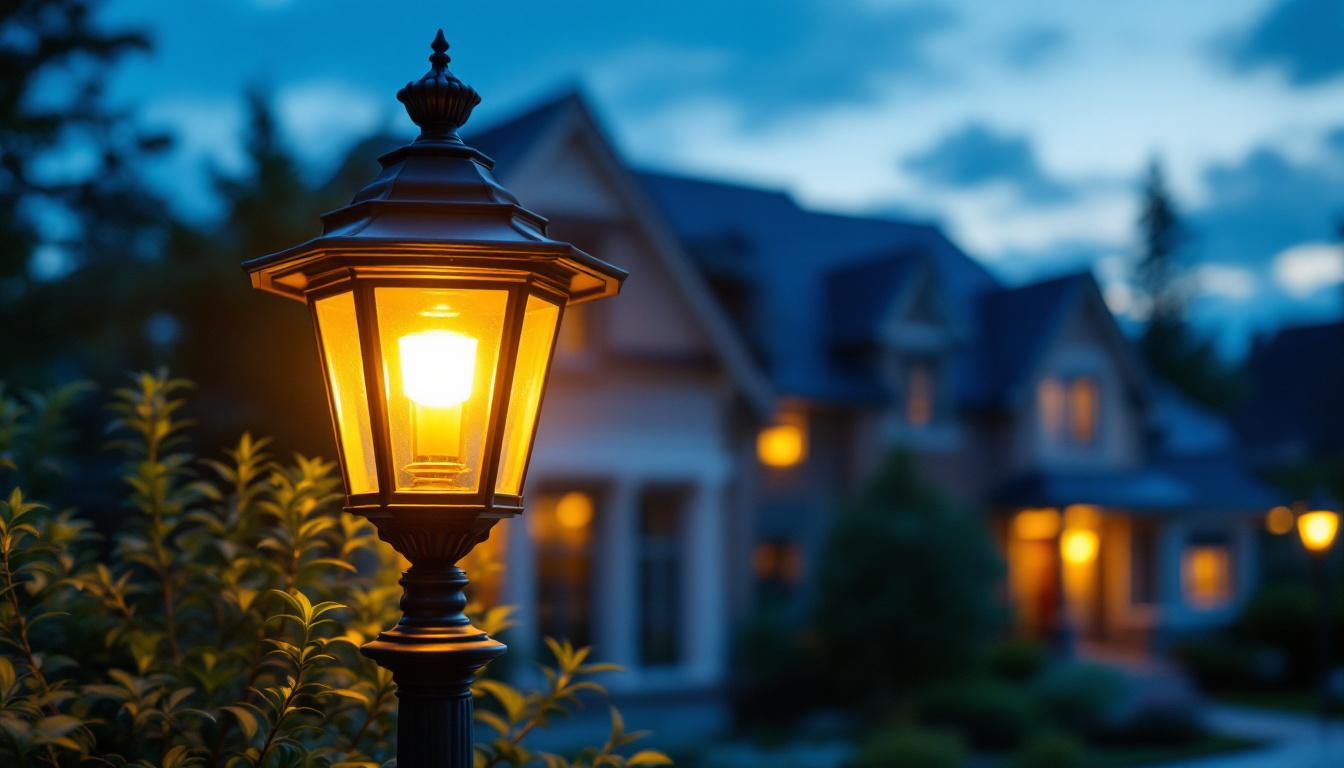
As outdoor lighting continues to evolve, motion lights have emerged as a popular choice among homeowners and businesses alike. These lights not only enhance security but also add convenience and aesthetic appeal to outdoor spaces. For lighting contractors, understanding the intricacies of motion lights is essential for providing clients with the best solutions. This article offers expert advice on selecting, installing, and maintaining motion lights outdoors.
Motion sensor lights utilize advanced technology to detect movement and automatically illuminate the area. This feature is particularly beneficial for outdoor spaces, where safety and security are paramount. The primary types of motion sensors include passive infrared (PIR), microwave, and dual technology sensors, each offering distinct advantages and applications. As urban areas continue to grow and outdoor lighting becomes more essential for safety, understanding these technologies can help homeowners and businesses make informed decisions about their lighting systems.
PIR sensors are the most common type used in motion lights. They detect changes in infrared radiation, which is emitted by warm bodies, such as humans and animals. When a person or animal enters the sensor’s detection zone, the light activates. These sensors are ideal for areas with predictable foot traffic, such as driveways and pathways. Additionally, PIR sensors are energy-efficient, as they only activate the lights when movement is detected, helping to conserve electricity and reduce utility costs. Their simplicity and reliability make them a popular choice for residential applications, particularly in suburban neighborhoods where security is a concern.
Microwave sensors emit microwave pulses and measure the reflection of those waves. Unlike PIR sensors, they can detect movement through walls and obstacles, making them suitable for larger areas. However, they may be more sensitive to environmental factors, such as wind or rain, which could lead to false triggers. These sensors are often used in commercial settings where expansive spaces need coverage, such as parking lots or warehouses. Their ability to cover a wider area and penetrate through obstacles allows for greater flexibility in installation, making them an attractive option for businesses looking to enhance security without compromising on aesthetics.
Combining both PIR and microwave technologies, dual technology sensors offer enhanced reliability. They require both types of detection to activate the light, significantly reducing the chances of false alarms. This makes them an excellent choice for high-security areas where accuracy is critical. In addition to their reliability, dual technology sensors can be finely tuned to minimize sensitivity to non-threatening movements, such as small animals or swaying branches. This adaptability makes them particularly useful in environments where false alarms can lead to unnecessary responses from security personnel or emergency services, ultimately saving time and resources.
Selecting the appropriate motion lights for a project involves several considerations, including the type of space, desired brightness, and energy efficiency. Lighting contractors must assess these factors to recommend the best products to their clients.
The brightness of motion lights is measured in lumens. For outdoor applications, a higher lumen output is often necessary to ensure adequate visibility. A typical motion light can range from 300 to 1,200 lumens, depending on the area it needs to illuminate. Contractors should discuss the specific lighting needs of their clients to determine the optimal lumen output. Additionally, it’s important to consider the placement of the lights; for example, lights positioned near walkways or entrances may require a different lumen level compared to those illuminating larger open areas. This tailored approach can significantly enhance safety and security, making spaces more welcoming and functional during nighttime hours.
With the growing emphasis on sustainability, energy-efficient lighting options are increasingly popular. LED motion lights are an excellent choice due to their low energy consumption and long lifespan. Not only do they reduce electricity bills, but they also require less frequent replacement, making them a cost-effective solution in the long run. Furthermore, many modern LED motion lights come equipped with smart technology, allowing users to control them via smartphone apps or home automation systems. This added convenience not only enhances energy savings by allowing users to customize settings based on their routines but also contributes to a more secure environment by enabling remote monitoring and control.
While functionality is crucial, the design of motion lights should not be overlooked. Available in various styles and finishes, lighting contractors should help clients choose fixtures that complement the overall aesthetic of their property. This consideration enhances the visual appeal of the outdoor space while ensuring effective lighting. Moreover, the choice of materials can also impact durability and maintenance; for instance, weather-resistant finishes can ensure longevity in harsh climates. Incorporating motion lights that blend seamlessly with architectural features or landscaping can create a cohesive look that enhances the property’s curb appeal while providing practical illumination for safety and security.
Proper installation is critical to the performance of motion lights. Lighting contractors must adhere to best practices to ensure that the lights function as intended and provide maximum benefit to clients.
Placement is key when installing motion lights. They should be positioned at a height that allows for optimal detection while minimizing the risk of tampering. Generally, a height of 8 to 10 feet is recommended. Additionally, placing lights in areas with a clear line of sight to the detection zone will enhance their effectiveness. It’s also beneficial to consider the surrounding landscape; for instance, avoiding placement near dense foliage can prevent false activations caused by moving branches or animals. Furthermore, strategic placement near entry points, such as doors and driveways, can significantly improve security by illuminating potential intruders as they approach.
Most motion lights come with adjustable sensitivity and range settings. Contractors should take the time to configure these settings according to the specific environment. For instance, in high-traffic areas, a higher sensitivity setting may be appropriate, while in quieter locations, a lower sensitivity may help reduce false triggers. It’s also important to test these settings after installation, as environmental factors like wind or passing vehicles can affect performance. Regular adjustments may be necessary to maintain optimal functionality, especially in changing seasons when foliage and weather conditions can alter detection patterns.
When installing motion lights, it is essential to consider the wiring and power supply. Ensure that the electrical connections are secure and comply with local building codes. For solar-powered motion lights, contractors should assess the location for adequate sunlight exposure to maximize performance. Additionally, using weather-resistant wiring and fixtures can enhance durability and reduce maintenance needs over time. It’s also wise to plan for potential future upgrades; installing a dedicated circuit for motion lights can facilitate the addition of more lights or advanced features, such as smart home integration, without overloading the system.
Dust, dirt, and debris can accumulate on motion lights, obstructing the sensor’s view and reducing effectiveness. Regular cleaning of the fixtures and sensors will help maintain their performance. Additionally, periodic inspections of the wiring and connections can prevent potential issues before they arise.
Common problems with motion lights include false triggers, lights not turning on, or inconsistent performance. Contractors should be prepared to troubleshoot these issues. For example, if a light frequently activates without cause, adjusting the sensitivity or repositioning the sensor may resolve the problem. If the lights fail to turn on, checking the power source and connections is essential.
Motion lights serve as a deterrent to potential intruders, making them an essential component of outdoor security systems. Understanding how to leverage these lights effectively can help contractors provide added value to their clients.
For clients seeking comprehensive security solutions, integrating motion lights with existing security systems can be beneficial. Many modern security systems allow for the integration of motion lights, enabling homeowners to receive alerts when the lights are triggered. This feature enhances the overall security strategy and provides peace of mind.
Strategically placing motion lights around a property can create a well-lit perimeter, discouraging unauthorized access. Lighting contractors should work with clients to design a lighting plan that maximizes visibility while minimizing dark spots. This approach not only enhances security but also improves the overall ambiance of the outdoor space.
The outdoor lighting industry is constantly evolving, and staying informed about emerging trends is essential for lighting contractors. Understanding these trends can help contractors remain competitive and provide innovative solutions to their clients.
Smart technology is revolutionizing the way outdoor lighting systems operate. Many motion lights now come equipped with smart features, allowing homeowners to control their lights remotely via smartphone apps. This technology enables users to adjust settings, monitor activity, and even receive alerts when motion is detected, providing enhanced convenience and security.
As sustainability becomes a priority, solar-powered motion lights are gaining popularity. These lights harness solar energy to operate, reducing electricity costs and environmental impact. Contractors should consider offering solar options to clients looking for eco-friendly solutions.
Advancements in sensor technology are leading to more sophisticated motion lights. Newer models may include features such as facial recognition or the ability to distinguish between different types of movement. Staying updated on these innovations can help contractors provide cutting-edge solutions to their clients.
Motion lights are a valuable addition to outdoor spaces, enhancing security and convenience for homeowners and businesses. By understanding the technology, choosing the right products, and following best installation practices, lighting contractors can offer exceptional service to their clients. As the industry continues to evolve, staying informed about trends and advancements will ensure that contractors remain at the forefront of outdoor lighting solutions.
Ready to elevate your outdoor lighting game? At LumenWholesale, we provide lighting contractors like you with the highest quality motion lights that blend security, convenience, and design. Our spec-grade lighting products come at unbeatable wholesale prices, ensuring you get the best value for your projects. Say goodbye to local distributor markups and hello to a vast selection of reliable, high-performance lighting solutions. Plus, with free shipping on bulk orders, you can stock up on premium lighting without worrying about hidden fees. Don’t compromise on quality or cost. Visit LumenWholesale today and discover the perfect blend of quality, affordability, and convenience for all your lighting needs.

Discover expert strategies and proven techniques for lighting contractors to effectively utilize fluorescent bulbs.

Discover the comprehensive guide to 6-inch LED lights tailored for lighting contractors.

Discover essential tips and strategies for lighting contractors to excel in installing and maintaining residential lamp posts.

Discover the top challenges lighting contractors face in the industry and how a Rejuvenation Lighting promo code can offer solutions.